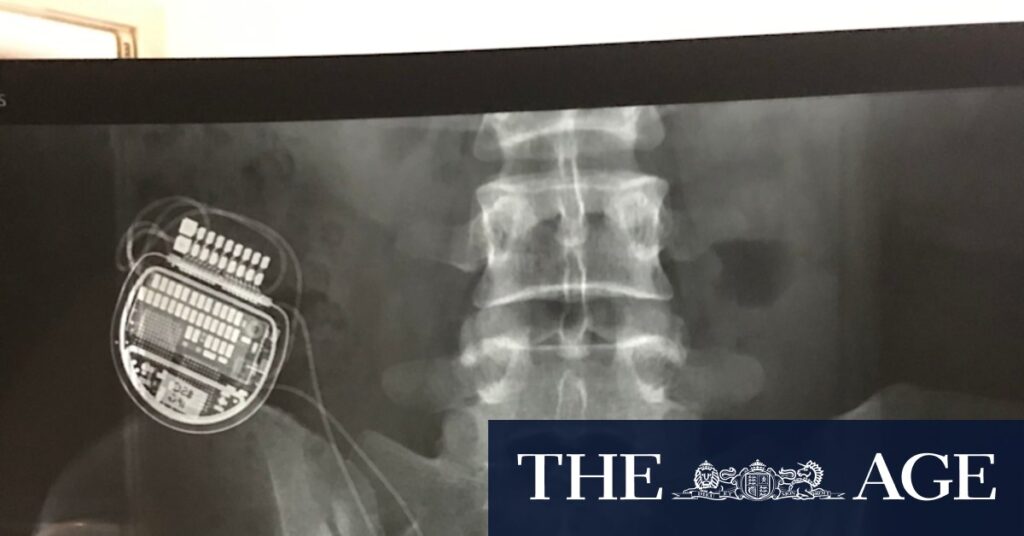
The debate over the effectiveness of spinal cord stimulators has intensified following a recent study led by Dr. Caitlin Jones from the University of Sydney’s Institute of Musculoskeletal Health. The study found that these devices, which can cost over $50,000, pose greater risks than benefits. “Patients should know they are taking on a substantial risk, that is exorbitantly expensive, with very little likelihood of any benefit,” Dr. Jones stated.
The Medical Technology Association of Australia (MTAA), representing device manufacturers, has rejected these claims. A spokesperson for the MTAA asserted that spinal cord stimulators are “a demonstrably safe and effective alternative to long-term drug therapies, notably opioids.” They emphasized that the devices have shown positive outcomes in patients, supported by clinical trials and real-world evidence.
Understanding Spinal Cord Stimulators
Spinal cord stimulators are composed of a small battery pack implanted beneath the skin and connected to electrodes. These devices are designed to send electrical pulses that interfere with pain signals from the nerves. Manufacturers claim they are both safe and effective, yet the medical community remains divided.
Chronic pain, including conditions like “failed back surgery syndrome,” presents a significant challenge for treatment. Associate Professor Michael Vagg, director of professional affairs for the Australian Faculty of Pain Medicine, noted, “Nothing in pain management has bulletproof evidence.” Despite this, Cochrane reviews, which are highly regarded for their unbiased scientific analysis, have concluded that spinal cord stimulators are likely ineffective for chronic pain management.
Expert Opinions and Patient Experiences
Associate Professor Adrian Traeger, who led one of the Cochrane reviews, expressed concern over the continued use of these stimulators. “People are accepting these high costs and risks for a treatment that was proven no better than placebo,” he said, suggesting that the risk-benefit profile may not be fully communicated to patients.
Despite the lack of a formal position from Australia’s pain management faculty, some practitioners, like Michael Vagg, report good results in a select group of patients. “Stims are never going to be suitable for even a sizeable minority of pain patients,” Vagg commented.
Meanwhile, the MTAA criticized the study published in the Medical Journal of Australia, arguing it overlooked extensive clinical evidence supporting spinal cord stimulation. They also questioned the potential bias in the insurance data used in the study, which was facilitated by Private Healthcare Australia.
Financial and Regulatory Implications
The financial burden of spinal cord stimulators is significant. The study found that each patient costs private insurers an average of $55,635, excluding out-of-pocket expenses. Ben Harris, director of policy and research at Private Healthcare Australia, emphasized, “This is a very expensive procedure which study after study after study shows does not work any better than placebo.”
In response to growing concerns, the federal Department of Health initiated a review of spinal cord stimulators following a 2022 investigation. As a result, the Therapeutic Goods Administration (TGA) cancelled the registrations of 12 devices and imposed conditions on 52 others. The review is ongoing, with the TGA stating that the evidence suggests an acceptable risk-benefit profile.
Exploring Alternatives for Chronic Pain
For those seeking alternatives to spinal cord stimulators, Professor Chris Maher, director of the Institute for Musculoskeletal Health, recommends lifestyle changes such as increased exercise. A 2021 Cochrane review found moderate-quality evidence that exercise can improve back pain more effectively than a placebo.
Additionally, chronic low back pain often involves a neurological component, making psychological treatments like cognitive behavioral therapy (CBT) an effective option. These approaches emphasize the importance of a holistic strategy in managing chronic pain.
As the debate continues, patients and healthcare providers must navigate the complex landscape of chronic pain management, weighing the costs and benefits of various treatment options. The ongoing review by the TGA and further studies will likely influence future recommendations and regulatory decisions.







